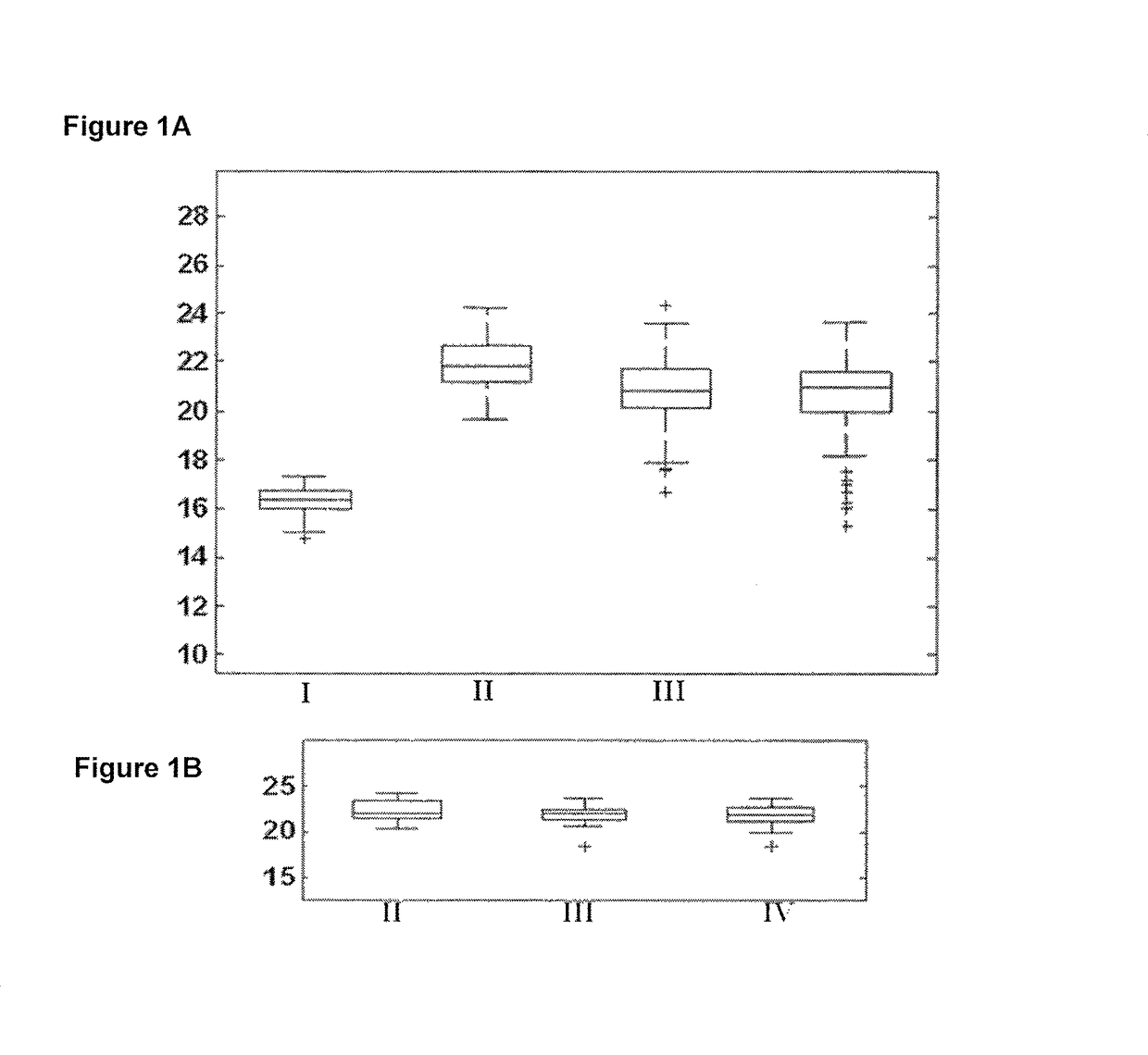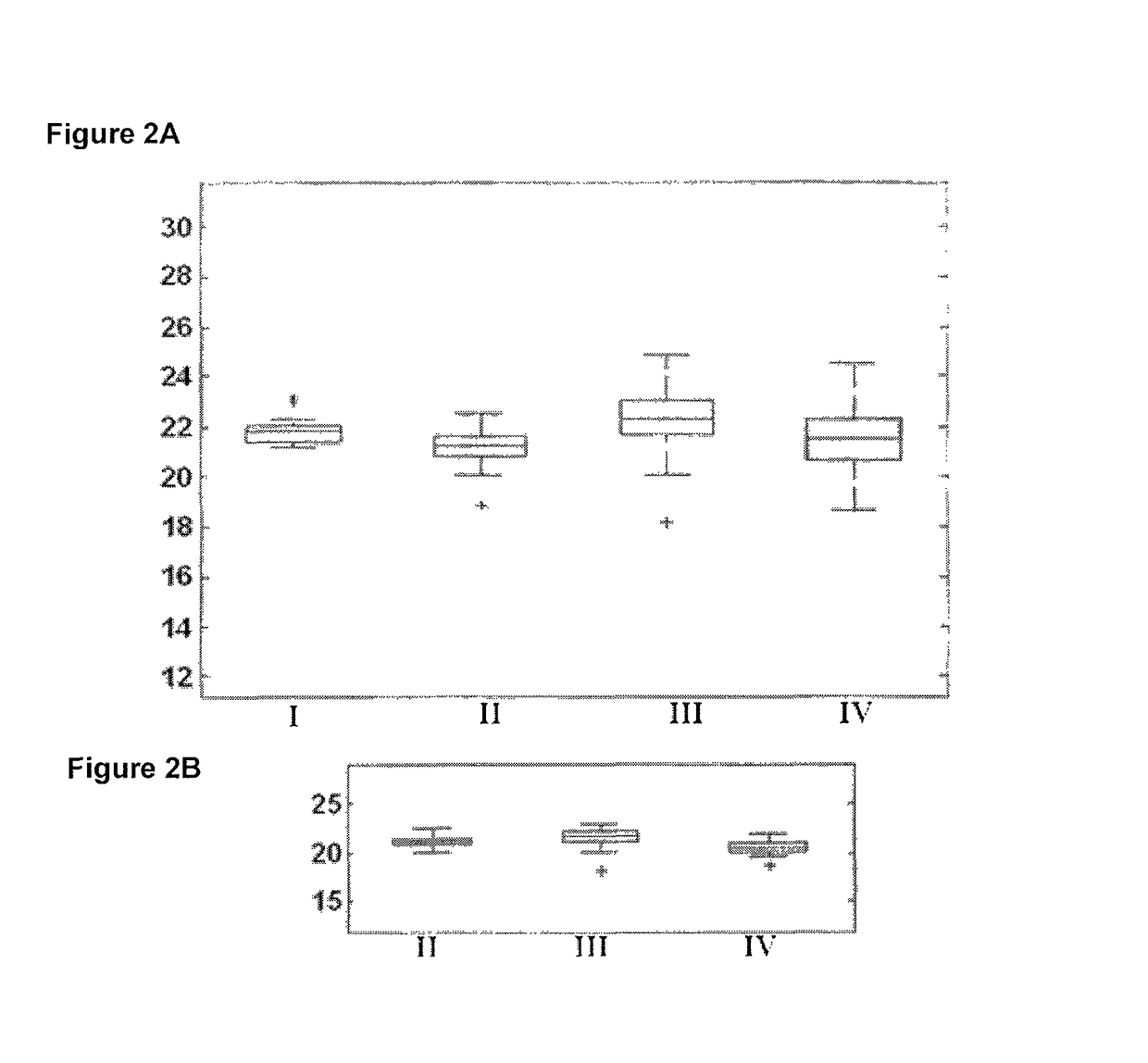Methods for lung cancer classification
a technology of lung cancer and classification method, applied in the field of microorganisms, can solve the problems of lack of standardized techniques, affecting the accuracy of lung cancer classification, and the current method of cancer classification and staging is not completely reliable, so as to achieve accurate classification of lung cancer
- Summary
- Abstract
- Description
- Claims
- Application Information
AI Technical Summary
Benefits of technology
Problems solved by technology
Method used
Image
Examples
example 1
Experimental Procedures
1. Tumor Samples
[0211]229 formalin-fixed paraffin embedded (FFPE) resections, FNA and FNB from different histological subtypes of lung cancer samples (Table 1) were obtained from the following sources: Sheba Medical Center, Tel Hashomer, Israel; Rabin Medical Center, Petah Tikva, Israel; and ABS Inc., Wilmington, Del. Institutional review approvals were obtained for all samples in accordance with each institute's institutional review board or IRB-equivalent guidelines.
[0212]
TABLE 1Tumor samplesResectionFNBFNATotalSmall1662345Carcinoid270027NonSquamous4243379Squamous36123078Total1212286229
2. miR Array Platform
[0213]MicroRNA profiling was performed on a set of 50 resection samples (11 small, 15 carcinoid, 15 non-squamous NSCLC, 9 squamous) that overlap with the resection samples listed in Table 1. Profiling was performed using both in-house custom microRNA microarrays and Agilent custom microRNA microarrays. In the in-house microarrays, 747 DNA oligonucleotide p...
example 2
Specific MicroRNAs are Able to Distinguish Between Various Types of Lung Tumor Samples
[0252]The real time PCR quantitation analysis of miRs differentially expressed between the various types of lung tumor samples are presented in Table 3. The results exhibited a significant difference in the expression pattern of the specific miRs as indicated in Table 3 and FIGS. 1-9.
[0253]
TABLE 3Normalized miR expression as measured by RT-PCR distinguishing betweendifferent subtypes of lung tumor samplesCarcinoid vs SmallCarcinoid vs NonSquamousFold-Fold-miR namechangeP-valuechangeP-valuehsa-miR-106a48.55.46E−3822.2 7.65E−28hsa-miR-125a-5p 1.50.0004471.450.0031hsa-miR-129-3p36.45.31E−22532.90E−31hsa-miR-2057.834.32E−0817.4 1.22E−16hsa-miR-217.753.17E−18452.40E−38hsa-miR-29b4.534.35E−071.71.33E−05hsa-miR-3751.830.0063410.32.34E−18hsa-miR-78.844.25E−0889.3 2.32E−45Carcinoid vs SquamousSmall vs NonSquamousFold-Fold-miR namechangeP-valuechange P-valuehsa-miR-106a252.25E−242.185.70E−06hsa-miR-125a-5p1....
example 3
microRNA Similarity
[0254]For a set of 38 resection samples (10 Carcinoid, 9 Small, 10 NonSquamous, 9 Squamous), RT-PCR was also performed for sequences similar to hsa-miR-106a and hsa-miR-29b. For hsa-miR-106a, 5 miRs with similarity ranging from 73.9% to 95.6% were examined. For hsa-miR-29b, one miR, with similarity 86.4%, was examined. As shown in Table 4 and FIGS. 10-11, for both miRs, the similar miRs have similar expression trends.
[0255]
TABLE 4Normalized miR expressionas measured by RT-PCR in similar sequences% similarityCarcinoid vs SmallCarcinoid vs NonSquamousto hsa- Fold-P-Fold-miR namemiR-106achangevaluechangeP-valuehsa-miR-106a10020.21.33E−214.373.36E−07hsa-miR-1795.617.95.62E−081.350.418hsa-miR-20a91.321.82.86E−071.340.583hsa-miR-9378.38.91.63E−063.720.000126hsa-miR-18a73.912.91.81E−073.690.00351hsa-miR-18b73.915.72.29E−204.731.19E−05hsa-miR-29b1006.393.32E−162.787.02E−09hsa-miR-29c86.45.626.43E−182.821.18E−11Carcinoid vs SquamousSmall vs NonSquamousFold-Fold-miR namecha...
PUM
| Property | Measurement | Unit |
|---|---|---|
| Tm | aaaaa | aaaaa |
| temperature | aaaaa | aaaaa |
| temperature | aaaaa | aaaaa |
Abstract
Description
Claims
Application Information
 Login to View More
Login to View More - R&D
- Intellectual Property
- Life Sciences
- Materials
- Tech Scout
- Unparalleled Data Quality
- Higher Quality Content
- 60% Fewer Hallucinations
Browse by: Latest US Patents, China's latest patents, Technical Efficacy Thesaurus, Application Domain, Technology Topic, Popular Technical Reports.
© 2025 PatSnap. All rights reserved.Legal|Privacy policy|Modern Slavery Act Transparency Statement|Sitemap|About US| Contact US: help@patsnap.com



